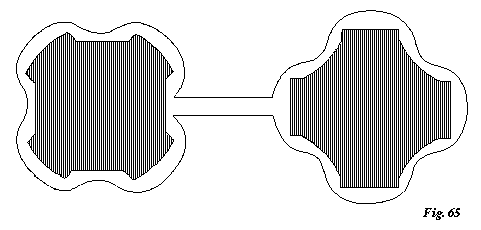378 THE STONES OF VENICE DECORATION
cornices, a of Fig. 5, with the added roll. This capital is somewhat remarkable in having its sides perfectly straight, some slight curvature being usual on so bold a scale; but it is all the better as a first example, the method of reduction being of order d, in Fig. 22, p. 140, and with a concave cut, as in Fig. 21, p. 139. These two capitals are from the cloister of the duomo of Verona.
§ 33. The lowermost figure in Plate 17 represents an exquisitely finished example of the same type, from St. Zeno of Verona.1 Above, at 2, in
 |
Plate 2, the plan of the shafts was given, but I inadvertently reversed their position: in comparing that plan with Plate 17, Plate 2 must be held upside down. The capitals, with the band connecting them, are all cut out of one block: their profile is an adaptation of 4 of Plate 15, with a plain headstone superimposed. Their method of reduction is that of order d in Fig. 22, but the peculiarity of treatment of their truncation is highly interesting. Fig. 65 represents the plans of the capitals at the base, the shaded parts being the bells; the open line, the roll with its connecting band. The bell of the one, it will be seen, is
1 [The scroll which surrounds the arch above this pillar is drawn in Modern Painters, vol. v. Fig. 42 (pt. vi. ch. vi. § 12). San Zeno was a favourite church with Ruskin: see Vol. VIII p. 48 n.]
[Version 0.04: March 2008]